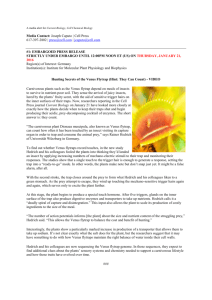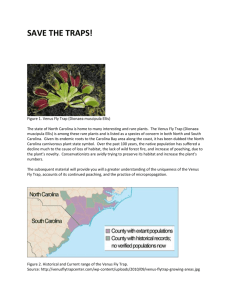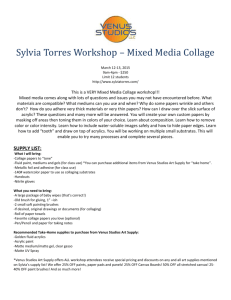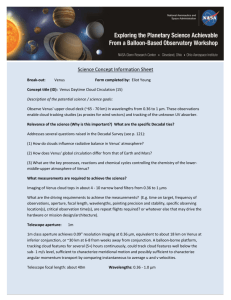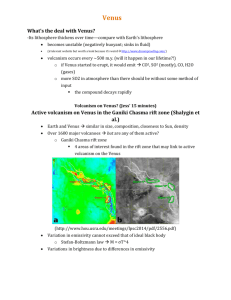Yu and Alhamawendi - Saddleback College
advertisement
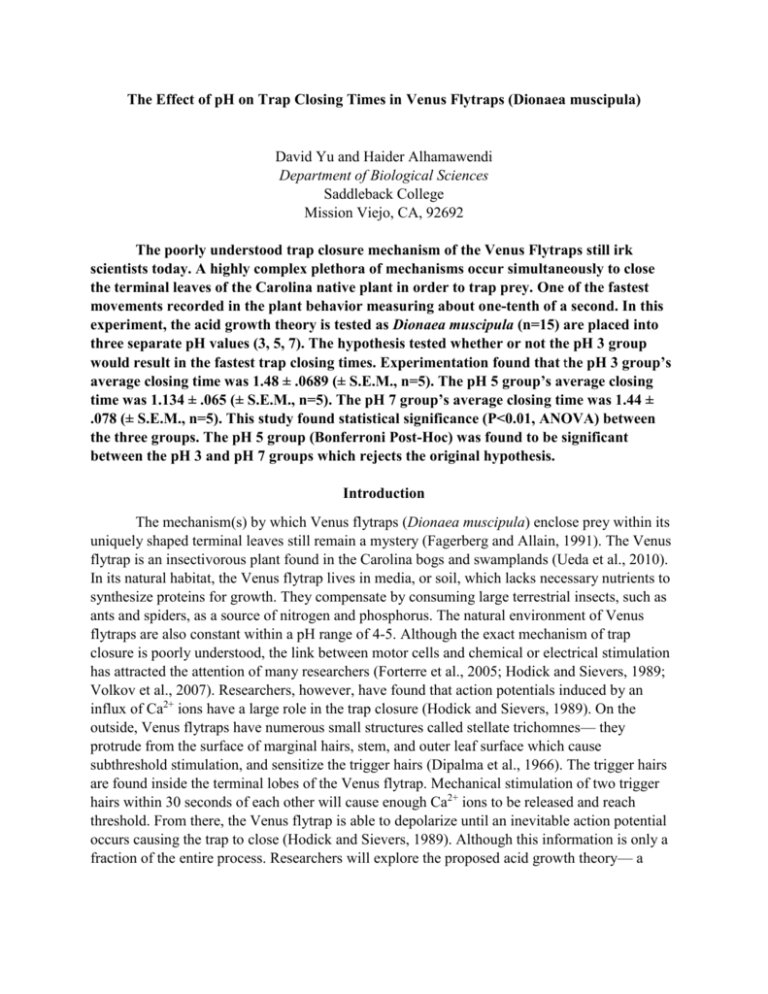
The Effect of pH on Trap Closing Times in Venus Flytraps (Dionaea muscipula) David Yu and Haider Alhamawendi Department of Biological Sciences Saddleback College Mission Viejo, CA, 92692 The poorly understood trap closure mechanism of the Venus Flytraps still irk scientists today. A highly complex plethora of mechanisms occur simultaneously to close the terminal leaves of the Carolina native plant in order to trap prey. One of the fastest movements recorded in the plant behavior measuring about one-tenth of a second. In this experiment, the acid growth theory is tested as Dionaea muscipula (n=15) are placed into three separate pH values (3, 5, 7). The hypothesis tested whether or not the pH 3 group would result in the fastest trap closing times. Experimentation found that the pH 3 group’s average closing time was 1.48 ± .0689 (± S.E.M., n=5). The pH 5 group’s average closing time was 1.134 ± .065 (± S.E.M., n=5). The pH 7 group’s average closing time was 1.44 ± .078 (± S.E.M., n=5). This study found statistical significance (P<0.01, ANOVA) between the three groups. The pH 5 group (Bonferroni Post-Hoc) was found to be significant between the pH 3 and pH 7 groups which rejects the original hypothesis. Introduction The mechanism(s) by which Venus flytraps (Dionaea muscipula) enclose prey within its uniquely shaped terminal leaves still remain a mystery (Fagerberg and Allain, 1991). The Venus flytrap is an insectivorous plant found in the Carolina bogs and swamplands (Ueda et al., 2010). In its natural habitat, the Venus flytrap lives in media, or soil, which lacks necessary nutrients to synthesize proteins for growth. They compensate by consuming large terrestrial insects, such as ants and spiders, as a source of nitrogen and phosphorus. The natural environment of Venus flytraps are also constant within a pH range of 4-5. Although the exact mechanism of trap closure is poorly understood, the link between motor cells and chemical or electrical stimulation has attracted the attention of many researchers (Forterre et al., 2005; Hodick and Sievers, 1989; Volkov et al., 2007). Researchers, however, have found that action potentials induced by an influx of Ca2+ ions have a large role in the trap closure (Hodick and Sievers, 1989). On the outside, Venus flytraps have numerous small structures called stellate trichomnes— they protrude from the surface of marginal hairs, stem, and outer leaf surface which cause subthreshold stimulation, and sensitize the trigger hairs (Dipalma et al., 1966). The trigger hairs are found inside the terminal lobes of the Venus flytrap. Mechanical stimulation of two trigger hairs within 30 seconds of each other will cause enough Ca2+ ions to be released and reach threshold. From there, the Venus flytrap is able to depolarize until an inevitable action potential occurs causing the trap to close (Hodick and Sievers, 1989). Although this information is only a fraction of the entire process. Researchers will explore the proposed acid growth theory— a theory that states hydrogen ions diffuse into cell walls therefore lowering pH and loosening extracellular components which facilitates the closing of the trap (Williams and Bennett, 1982). Materials and Methods Fifteen Venus flytraps (Dionaea muscipula) and a 5 oz. of dried sphagnum moss was received from Joel’s Carnivorous Plants. Investigators purchased Dart brand Styrofoam cups, created two sets of holes on the lateral side, and created one hole on the posterior side (Figure 1). The dried sphagnum moss was rehydrated in Arrowhead brand distilled water. Venus flytraps were then transplanted with rehydrated sphagnum moss in Styrofoam cups. Venus flytraps were kept inside an investigator’s room in Irvine, CA near a window (they received approximately 5-8 hours of sunlight per day), and submerged (inside a plastic tub and only enough to cover the first set of holes) in distilled water when the experiment was not taking place. Every cup, each containing a Venus flytrap, was evenly divided, and randomly labeled using a random number generator with values 3, 5, or 7 (corresponding to each individual pH group being tested). Investigators prepared 3 pH solutions using 3 separate gallons of Arrowhead distilled water, and General Hydroponics (GH) brand pH down/up solutions. Investigators added small, but unmeasured amounts of each GH pH solution into the gallons of distilled water; the gallons were then shaken to allow for full dissociation. After 15 minutes, the gallons were measured with both EM Science brand pH indicator strips (measures pH 0.0-6.0) and GH brand pH indicator solution (measures pH 4.0-8.5). Investigators repeated the process until the desired pH values were obtained. Figure 1. Lateral and Posterior view of Styrofoam cups. Holes were each approximately 2.54 cm in length and 1 cm in width on the lateral side. They were cut 1 cm from the base of the cup and 3 mm from the base of the cup. A 2 cm circle, under the cup, was also cut to allow absorption of water Investigators took each pH group, each consisting of five Venus flytraps, out of distilled water and into two metal trays. The metal trays were filled, up to the first set of holes in the Styrofoam cups, with their designated pH solution. The Venus flytraps were soaked in the pH solutions for an hour. After an hour, the investigators triggered the Venus flytraps’ trigger hairs with a small stick, and recorded the closing times with a Samsung S5 Galaxy smartphone. The video footage was transferred to Windows Movie Player where the closing times could be accurately counted and recorded. This process was repeated approximately twice a week for three weeks between October 21st and November 11th. The data set was run through an one-way analysis of variance (ANOVA) and a Bonferroni Post-Hoc correction. An ANOVA was used due to the 3 groups involved and a Bonferroni Post-Hoc correction was used to ensure statistical significance in results (if it was statistical significant in the first place). Results Each group of Venus flytrap, consisting of pH 3, pH 5, and pH 7, had their mean closing times calculated after six trials conducted twice a week (Figure 2). Highly significant difference was found between the three data sets after running a single factor analysis of variance (single factor ANOVA). The pH 3 group’s average closing time was 1.48 ± .0689 (± S.E.M., n=5). The pH 5 group’s average closing time was 1.134 ± .065 (± S.E.M., n=5). The pH 7 group’s average closing time was 1.44 ± .078 (± S.E.M., n=5). Mean Venus Flytrap Closing Times (sec) 1.8 @ * 1.6 1.4 * @ 1.2 1 0.8 0.6 0.4 0.2 0 3 5 7 pH Figure 2. Mean Venus flytrap closing times. Mean Venus flytraps closing times by pH values where the pH 5 group is significantly different than both the pH 3 group and the pH 7 group. Error bars are ± SEM. Discussion The Venus flytraps (Dionaea muscipula) closing times reflect the favorability in the pH 5 environment. The Venus flytrap shows significant increases in trap closure time after being subjected to non-optimal pH values. As the Bonferroni correction showed significance between pH 5 and pH 3, and between pH 5 and pH 7. The results of the experiment do not support the hypothesis stated, however, there is statistical significance that pH 5, an acidic pH, is preferred over other pH values. In accepting the null hypothesis, the experimenters do not fully refute the original hypothesis as the acid growth theory could not be proven to be incorrect. Instead the experimenters made the assumption that pH positively correlates with faster Venus flytrap closing times without limitations. Experimenters were unable to access similar research to either confirm or deny their results. Future experimentation on the subject should be advised to conduct during non-winter months. As Venus flytraps are known for their fraction of a second closure times. The dormancy of Dionaea muscipula brought on by end of the fall season can explain the general slowness of trap closure rates. Although all traps seem to have been affected equally, more accurate times of Venus flytraps may prove beneficial. Future experimentation should also be advised to transplant for at least a month before conducting experimentation as it may assist in increasing accuracy. Literature Cited Dipalma, J.R., McMichael, R., and Dipalma, M. (1966). Touch Receptor of Venus Flytrap, Dionaea muscipula. Science 152: 539-540. Fagerberg, Wayne R., and Allain, Dawn. (1991). A Quantitative Study of Tissue Dynamics During Closure in the Traps of Venus’s Flytrap (Dionaea muscipula Ellis). American Journal of Botany 78: 647-657. Forterre, Y., Skotheim, J.M., Dumais, J., and Mahadevan, L. (2005). How the Venus Flytrap Snaps. Nature 433: 421-425. Hodick, Dieter, and Sievers, Andreas. (1989). On the Mechanism of Trap Closure of Venus Flytraps (Dionaea muscipula Ellis). Planta 179: 32-42. Ueda, Minoru, Tokunaga, Takashi, Okada, Masahiro, Nakamura, Yoko, Takada, Noboru, Suzuki, Rie, and Kondo, Katsuhiko. (2010). Trap-Closing Chemical Factors of the Venus Flytrap (Dionaea muscipula Ellis). ChemBioChem 11: 2378-2383. Volkov, A.G., Adesina, Tejumade, and Jovanov, Emil. (2007). Closing of Venus Flytrap by Electrical Stimulation of Motor Cells. Plant Signaling & Behavior 2: 139-145. Williams, Mary E., and Mozingo, Hugh N. (1971). The Fine Structure of the Trigger Hair in Venus’s Flytrap. American Journal of Botany 58: 532-539 Williams, Stephen E., and Bennett, Alan B. (1982). Leaf Closure in the Venus Flytrap: An Acid Growth Response. Science 218: 1120-1122.
